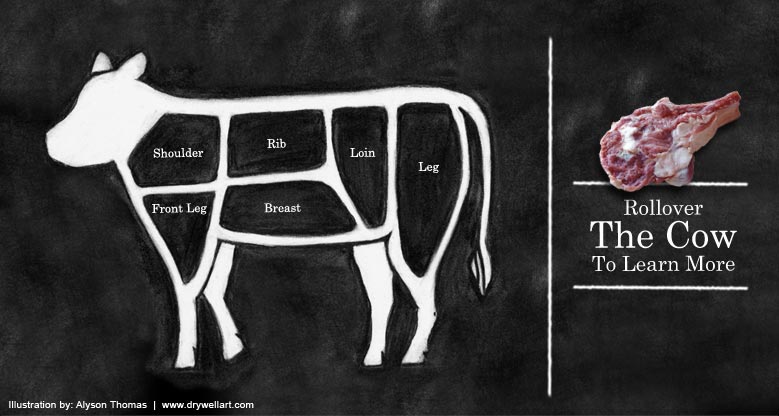







Veal is defined as a male calf of a dairy herd that is no more than 18 weeks old and weighing 450 pounds. Over 90% of veal is graded as prime or choice. Veal is praised for its light, mild flavor, leanness and delicate texture. Veal scaloppini, veal saltimbocca, veal Milanese and osso buco are among Italy's classic dishes. In France, tender scallops are sautéed with wine and butter and bone-in breasts are roasted for an elegant supper. Germans pound, bread and fry their veal to make Wiener schnitzel.
Traditionally, most young calves were confined in extremely restrictive quarters to inhibit muscle development and were fed milk or formula to keep the meat light in color. This "crate system" produced meat with desirable qualities – extreme leanness and tenderness and a light color. Today some U.S. producers raise free-range veal from calves that are grass-fed and/or bottle-fed milk. This results in redder, chewier veal than calves raised in limited quarters. Look for a "Certified Humane" label.
Because of the way calves are raised and their age at slaughter, veal never develops the kind of fat that characterizes beef, pork and lamb. Lean veal cutlets are especially low in saturated fat.







